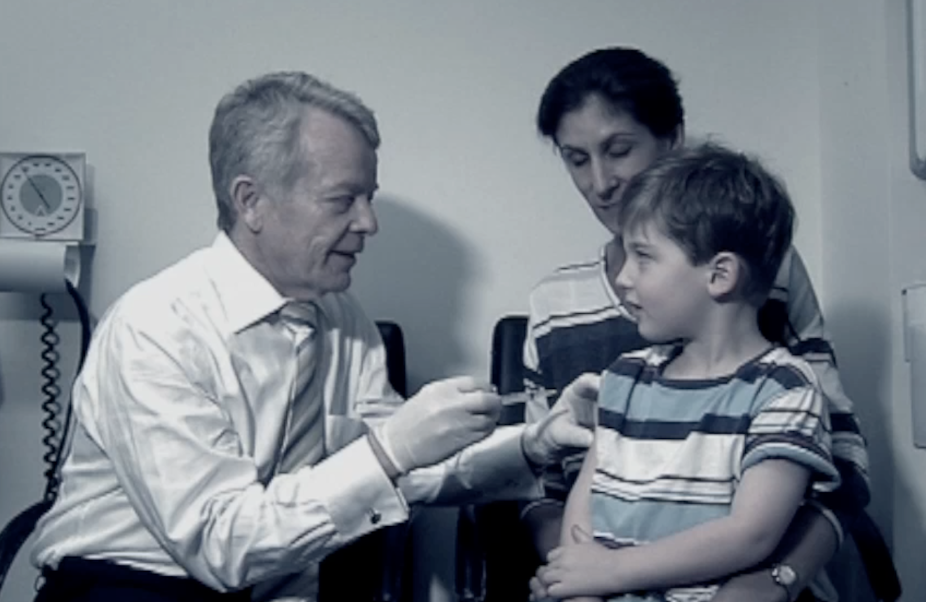In recent years there’s been growing debate around the safety of vaccinations – but how much of this is based on untruths?
In the latest collaboration between SBS and The Conversation, Dr Rachael Dunlop – a post-Doctoral fellow in the School of Medical and Molecular Sciences at the University of Technology Sydney – shares six myths about vaccinations.
Video transcript:
In Australia recently, figures were released showing that childhood vaccination rates have fallen to dangerously low levels in some areas of the country. And this has started again what some people refer to as the “vaccine debate”. In reality, there’s no debate: the science is in, and vaccines are safe and effective.
So let’s look at Myth Number 1: Vaccines cause autism.
This is an unsinkable rubber duck, and this myth was initiated in 1998 by Dr Andrew Wakefield, who published a paper in The Lancet suggesting that the measles, mumps, rubella vaccine was linked to autism. Since then, he has been struck from the medical records as a doctor.
The paper has been withdrawn from publication, and his work has been suggested to be fraudulent. This is because he didn’t reveal many conflicts of interest about his research, including the fact that he was paid by lawyers to build a case against the safety of the measles, mumps, rubella vaccine. And also, that he had submitted a patent for a singles measles vaccine of his own.
So after thousands of publications and 14 years, there is still no good evidence to support the link between vaccine and autism.
Myth Number 2: Smallpox and polio have virtually disappeared from the world, so why do we need to vaccinate?
Well it’s precisely because of vaccination that India has now had two years polio-free and smallpox exists only in freezers in scientific laboratories. In fact we’ve seen evidence recently in Wales in the UK of the effect of being complacent about vaccinating. Once we stop vaccinating as we did after the scare by Wakefield, then we see the resurgence of preventable diseases like there are now in measles outbreaks in Wales.
And this is one of the problems with vaccines – in a way they’re a victim of their own success. Once the diseases are reduced, they’re out of mind, out of sight. We don’t see a need to vaccinate any more. But it’s important to remember: they haven’t gone away. They’re still around, and they’ll come back with a vengeance.
Myth Number 3: More vaccinated people get the disease, therefore vaccines don’t work.
Vaccines are not 100% effective. They’re not like a force-field. So we can still pick up diseases even if we’ve been vaccinated. In addition, all vaccines have a different level of effectiveness. Some are more effective than the other, some are more effective after you’ve had two shots, as opposed to one shot.
But if you do catch the disease when you’re vaccinated, it’s much less likely you’ll get severe complications, severe side-effects, and the severity of duration of the disease will be reduced.
Myth Number 4: My unvaccinated child should be no risk to your vaccinated child.
Vaccines are not 100% effective. And there’s also many people in the community who can’t be fully vaccinated or can’t be vaccinated at all. For example, very young babies may have not had any vaccines yet so they’re at risk of contracting disease, and they’re more likely to die.
Also some people have suppressed immune systems or may be receiving cancer therapies. They can’t have vaccinations. Community immunity is the term we give when everyone is vaccinated – thus we can protect the community. Vaccination is not just a personal choice, it’s a social responsibility.
Myth Number 5: Vaccines contain toxins.
So many of us these days turn to the internet to research our medications and to look up and diagnose our conditions. And if you type “vaccination” into Google, you’ll find a whole bunch of scary-sounding chemicals and toxins that are contained in vaccines. Well, in fact, they’re all there for a reason.
The most common one that people will say is dangerous is mercury. It’s also known as thiomersal or thimerosal. But it was taken out of all childhood scheduled vaccines in the year 2000. It’s simply not there.
Some of the other compounds such as formaldehyde, that is in vaccines, but there’s 600 times more formaldehyde in a pear that you eat than what you get in a vaccine. And your body naturally makes formaldehyde.
Myth Number 6: Vaccines can overwhelm a child’s immune system.
Now this is a concept that some people call “too many too soon”. And it can seem logical to think: “my tiny baby’s body can’t take all these vaccines”. Very recently, the Institute of Medicine in the US looked at the number of vaccines that children receive on the childhood immunisation schedule.
After extensive study and meticulous analysis, they determined that they are quite safe. For the amount of immune challenges that a child might experience in their environment every day equals between 2000 and 6000, whereas across the lifetime of a child schedule, it’s only about 150. So there’s nothing to worry about with overwhelming a child’s immune system.
Postscript:
Despite the array of opinions online, there are reliable sources on the web that you can head to for information. One good tip is to search for “immunisation”, not “vaccination”.
Most hits that come up for “vaccination” contain anti-immunisation messages.
Also look for government sites such as Immunise Australia or the Australian Academy of Sciences. Otherwise, have a chat with your GP or immunisation nurse.

